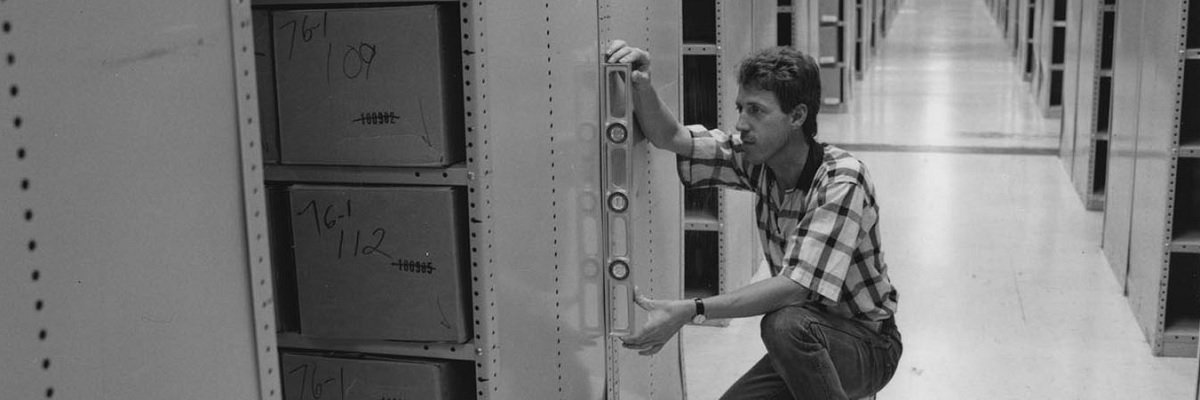In 1955, the Central Intelligence Agency’s Psychological and Paramilitary Operations Staff made some inquiries through their point of contact at the State Department about the storage and accessibility of records concerning CIA operations. When they didn’t receive the answer they wanted, an informal suggestion led to a formal policy to circumvent those requirements by manipulating technicalities and appearances, and in some cases ignoring the records even existed.
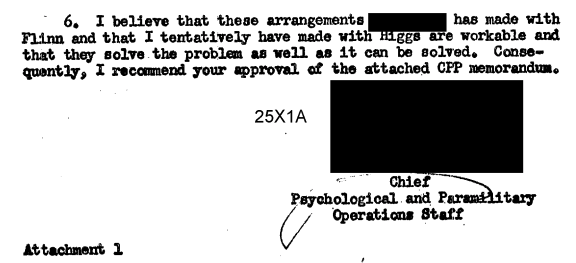
The sequence of events appears to have kicked off with a March 2nd, 1955 memo to Deputy Under Secretary Loy W. Henderson at the State Department. In response to this inquiry, the State Department responded with a memo stating that documents provided to the State Department “on an informal basis” effectively remained the property of the originating agency, and weren’t a part of the State Department’s files. As a result, they weren’t subject to publication, access, storage, or disposition except as authorized by an appropriately senior authority. Documents prepared by the State Department’s offices, however, were “official memoranda, position papers and classified studies” subject to ordinary controls.

These files could, however, be transferred to other agencies. To protect the agency’s security, files could be described “by a code name” when meeting the requirements for transfer.

On June 9th, it was requested that Mr. Higgs, who would be handling the files, be furnished with a safe to proper store them. He was also instructed on proper inventory and security handling.
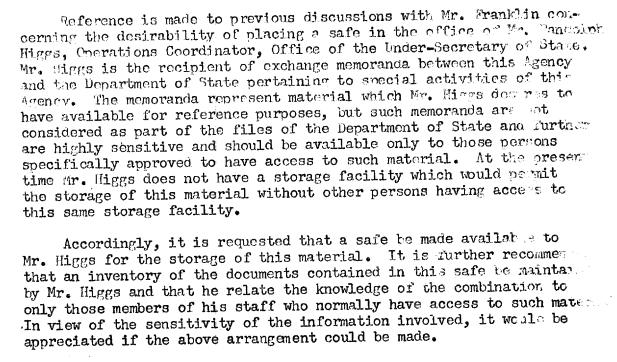
On approximately June 10th, these results were relayed in a memo to Frank Wisner, the Agency’s Deputy Director for Plans.
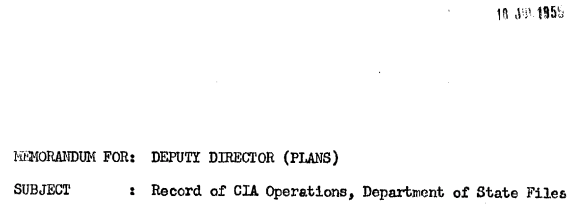
After summarizing the results, the memo described a ‘very informal’ suggestion that the CIA and the State Department consider all memos exchanged between the two as “prepared in CIA, whether or not any are in fact prepared by Higgs” or the State Department. Higgs also suggested that any documents CIA sent him be stamped as “Property of CIA: Please return when no longer needed.” In return, Higgs would return the documents as soon as they were no longer needed, and the State Department would “not become an archival record of CIA operations.”


Higgs’ informal suggestion would have gone un-memorialized if not included in the memo to Wisner. Higgs’ memo simply referred to “some ideas” he wanted to discuss orally about the issue.

In the third week of June, a memo from Wisner was drafted. While the draft copy in the CIA’s archives, originally classified SECRET, is unsigned, part of the policy it outlined remained classified in 2002 to protect intelligence sources and methods. If aversion of the memo was signed, it would have implemented the suggestion made by Higgs. State Department records would technically be considered CIA records, and CIA records would be returned to the Agency as soon as they no longer needed them.
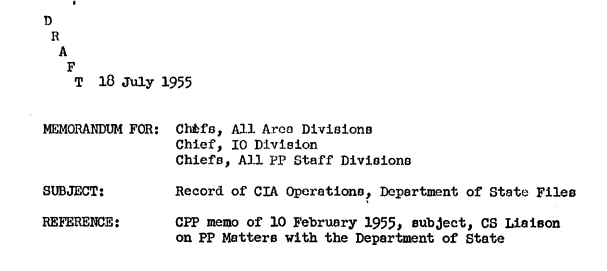
From the perspective of CIA’s Operational Security, the arrangement was virtually ideal. From the State Department’s perspective, it undoubtedly worked in the short-term. In the long-run, however, it denied the State Department an important form of institutional memory. From the perspective of FOIA requesters and archival researchers, it denied historians an important form of government transparency. And when it came to oversight, it left the CIA in control of who knew what.
MuckRock has filed a pair of FOIA requests to learn more. In the meantime, you can read the draft memo to Wisner below.
Image via US National Archives
